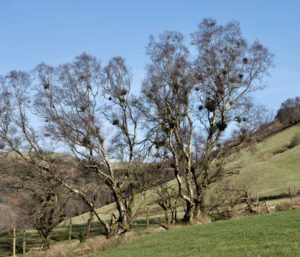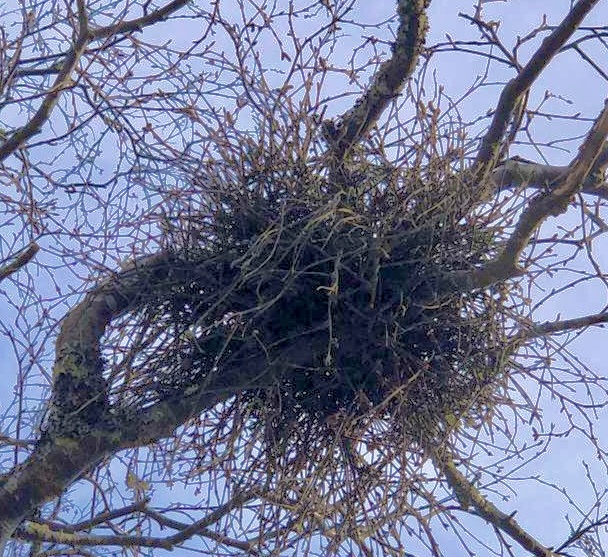A besom or a witch’s broom ?

A besom is a bunch of twigs tied to a handle to make a broom. In fiction and children’s stories, a witch is often depicted as flying on such a broom. However, a witch’s broom* can also refer an abnormal growth of twigs in a tree.
A number of trees and shrubs (evergreen or deciduous) can develop these ‘abnormal growths’, but in the UK they are more likely to be seen on Birch. When high up in the canopy, they may be mistaken for a bird’s nest or a ball of mistletoe. Mistletoe is a different organism, a partial parasite, growing on the tree, whereas a witch’s broom is part and parcel of the tree itself.
Normally, the buds of a tree develop in a predetermined sequence that is governed / controlled by plant hormones. On a twig or stem, the apical bud is dominant and the lateral buds are ‘held back’. This is under the control of the growth regulator - auxin (indole acetic acid). Auxin slows or inhibits the growth of the lateral buds so that the apical bud is favoured. If auxin production is impaired the regulated development of the twigs is upset so that many buds open and develop, and a multitude of closely packed twigs is formed.

Many things can interfere with auxin production, for example, physical damage to a tree, which may allow the entry of micro-organisms - for example, infection with the fungus Taphrina betulina. This fungus can affect dwarf birch, silver birch and downy birch. Different species of Taphrina can infect hornbeam and cherry resulting in witches brooms on these trees. Sometimes, a witch’s broom can form as a result of a mutation occurring in a growing region (meristem). Such brooms are more often seen in certain conifers, sometimes cuttings of these are propagated to make attractive dwarf or colourful new cultivars (for example Picea abies 'Clanbrassiliana Stricta’).
* or hexenbesen in German.
Thanks to Torquil and Helen for images.
Comments are closed for this post.
